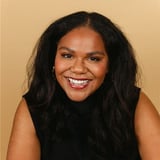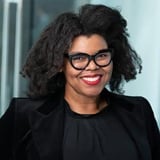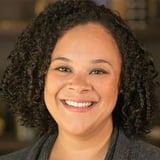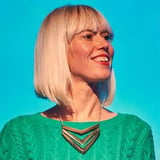Log in or create a free Rosenverse account to watch this video.
Log in Create free account100s of community videos are available to free members. Conference talks are generally available to Gold members.
Summary
Objectives and Key Results (OKRs) are a staple of Q1 goal setting, but how helpful are OKRs to achieving your team's goals? Are they agile: do they stay relevant in a constantly shifting new normal, or does the process of getting to mutually agreed OKRs suck the innovation out of a team? Join Bria Alexander, DesignOps 2022 curator, in conversation with Design Operations leaders Benson Low, Natalya Pemberton, and Stephanie Goldthorpe to discuss the help (or the harm) in setting OKRs.
Key Insights
-
•
OKRs work best when teams feel ownership of the key results connected to organizational objectives.
-
•
Enforcing OKRs individually across all roles can cause resistance, especially among junior engineers.
-
•
OKRs are as much a mindset and a tool for collaborative alignment as a goal-setting framework.
-
•
Language and framing of OKRs should be customer-centric and value-focused, not solely business outcomes.
-
•
OKRs can foster cross-team conversations about interdependencies that did not exist previously.
-
•
Measurement in OKRs can and should include qualitative, quantitative, milestone-based, and aspirational metrics.
-
•
OKRs may not fit all organizations or teams; in such cases alternative goal-setting tools or prioritization models can be used.
-
•
OKRs should be iterative with regular check-ins allowing teams to pivot based on outcomes and realities.
-
•
Setting too many or unrealistic OKRs can demotivate teams; focus and selectivity are critical.
-
•
Successful OKRs help design leaders secure a seat at the strategic table and influence broader organizational goals.
Notable Quotes
"When teams are connected to real strategic missions and own their key results, OKRs become positive."
"Junior engineers often resent having to create OKRs that feel disconnected from their day-to-day work."
"It's okay to try and mess up your OKRs in the first few quarters and learn from it."
"OKRs are not one-size-fits-all; you have to shape them based on your organizational context and culture."
"Language matters—make your OKRs user-centric and customer-focused to avoid them feeling like overhead."
"OKRs can sometimes suck the oxygen out of the room if they focus only on bottom-line results, missing process and experience."
"Celebrate progress continuously and use OKRs as a learning process to evolve goals and strategies."
"Accessibility is a great example where OKRs can unify multiple product and design teams to a non-negotiable standard."
"OKRs help highlight intentions to leadership and open up conversations that generate alignment and support."
"An OKR coach told us to think of OKRs like a health panel at a physical—you have KPIs for status and OKRs for change targets."
Or choose a question:
















More Videos

"Our research practice was perceived largely as design testers, empathy vehicles, and policing functions — a narrow, reactive role."
Nalini KotamrajuResearch After UX
March 25, 2024

"Care less about being certain and more about being effective."
Dean BroadleyNot Black Enough to be White
January 8, 2024

"Racism is by design, and there's no way to counter it unless we counter it with design."
Denise Jacobs Nancy Douyon Renee Reid Lisa WelchmanInteractive Keynote: Social Change by Design
January 8, 2024

"Our team’s improvement wasn’t the final state—we set ambitious goals to be in the 80th to 90th percentile next year."
Kim Fellman CohenMeasuring the Designer Experience
October 23, 2019

"Power is the ability to change another person’s reality."
George AyeThat Quiet Little Voice: When Design and Ethics Collide
November 16, 2022

"Sometimes alignment work isn’t enjoyable, but it’s part of the job for design system success."
Nathan CurtisBeyond the Toolkit: Spreading a System Across People & Products
June 9, 2016

"Our researchers talk regularly to the CEO and are closely involved in product decisions, making research highly impactful here."
Greg PetroffThe Compass Mission
March 10, 2021

"Global and local cultures are closely entwined and always influencing one another."
Chloe Amos-EdkinsA Cultural Approach: Research in the Context of Glocalisation
March 27, 2023

"We started analytics at the beginning so we could benchmark and compare old and new site performance."
Mackenzie Cockram Sara Branco Cunha Ian FranklinIntegrating Qualitative and Quantitative Research from Discovery to Live
December 16, 2022
Latest Books All books
Dig deeper with the Rosenbot
What small-scale projects can help service design teams gain early credibility in new organizations?
What tools or formats work best to align diverse teams with different digital literacy levels on a market launch process?
How does making organizational systems visible help teams overcome project fragmentation?



















